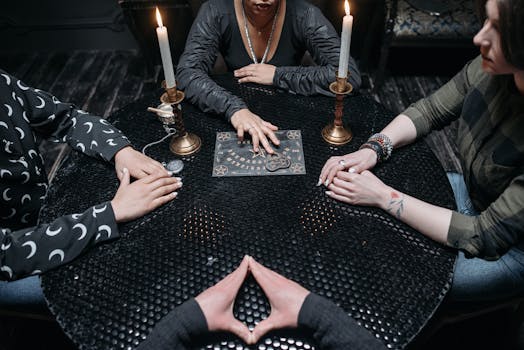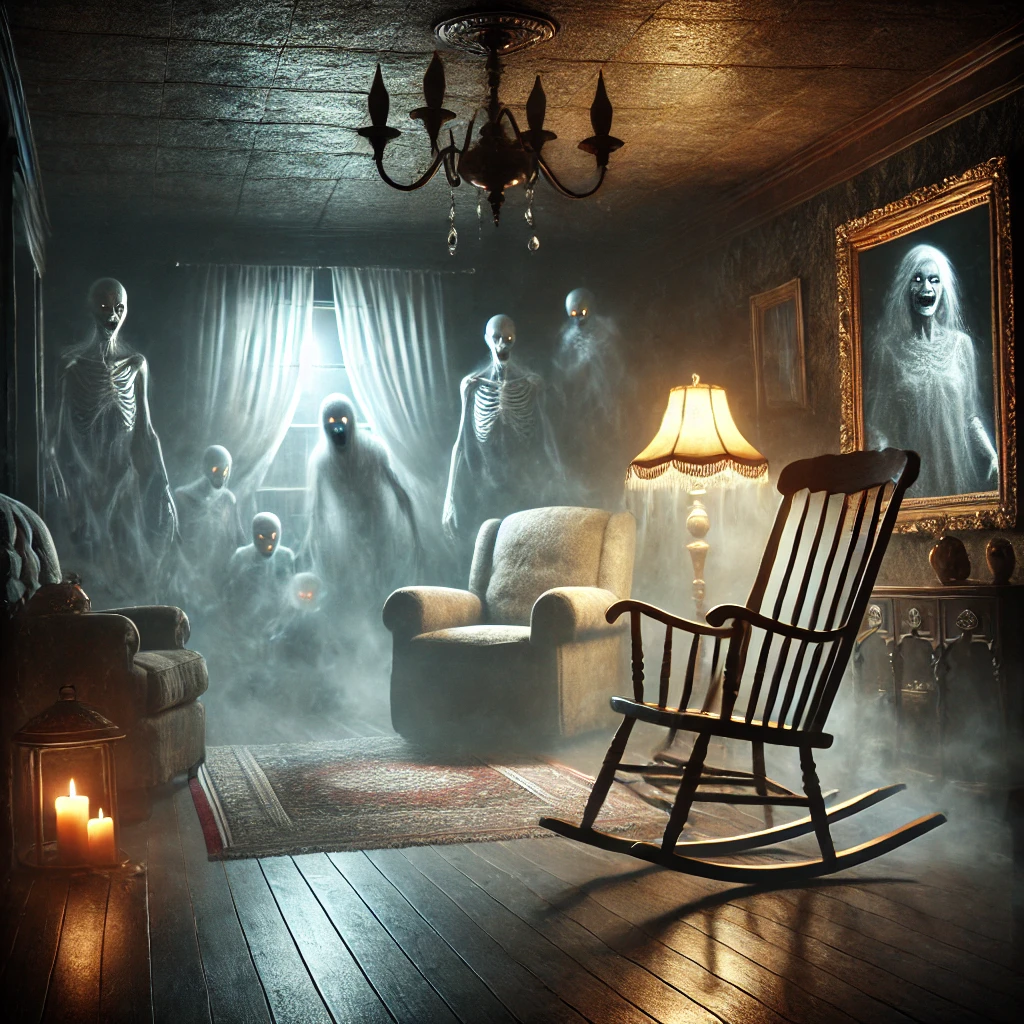Discover the most common FAQs about paranormal investigating in haunted locations. Learn about ghost hunting tools, safety tips, evidence collection, and expert advice for exploring haunted places with confidence.
Paranormal investigating in haunted locations often raises many questions for beginners and experienced ghost hunters alike.
From the tools you need to the best practices for gathering evidence, understanding the basics can make your investigations safer and more effective.
This FAQ guide covers the most common questions about exploring haunted places, giving you practical tips, expert insights, and clear answers to help you on your journey into the paranormal.
Here’s a fully fleshed-out introduction with proper formatting, keyword optimization, and a natural human tone:
Contents
- Common FAQs for Paranormal Investigating in Haunted Locations
- Common FAQs About Paranormal Investigating
- FAQ 1: What Equipment Do You Need for Paranormal Investigations?
- FAQ 2: How Do You Stay Safe During Investigations?
- FAQ 3: Can Spirits Really Communicate With Us?
- FAQ 4: How Do You Know If Evidence Is Real?
- FAQ 5: What Are the Best Haunted Locations for Beginners?
- FAQ 6: Do Paranormal Investigations Always Find Evidence?
- FAQ 7: What Are Common Signs of Paranormal Activity?
- FAQ 8: How Should You Prepare Before Visiting a Haunted Location?
- FAQ 9: Can Paranormal Investigating Be Dangerous?
- FAQ 10: Do Paranormal Investigators Believe in Ghosts?
- FAQ 11: What Should You Do If You Experience Something Scary?
- FAQ 12: Can Anyone Become a Paranormal Investigator?
- FAQ 13: How Long Do Paranormal Investigations Last?
- FAQ 14: What Should You Wear on an Investigation?
- FAQ 15: How Do You Document Evidence Properly?
- Final Thoughts on Paranormal Investigating
- Conclusion
- Tips, Strategies, and Techniques for Successful Paranormal Investigating
- Why These Tips and Strategies Matter
- References
- Related YouTube Video
Introduction to Paranormal Investigating in Haunted Locations
Why People Are Drawn to Haunted Places
People have always been fascinated by the unknown.
Haunted locations capture our curiosity because they hold stories of history, mystery, and fear.
When someone enters an old house, an abandoned hospital, or a graveyard, they are not only exploring a physical space.
They are stepping into a place filled with energy, memories, and possibly spirits. The idea that ghosts may linger in these places excites some and terrifies others.
Paranormal investigating has become more popular because people want answers. Television shows, podcasts, and social media have shown that anyone can grab a flashlight and start exploring.
While it looks thrilling, ghost hunting requires preparation, respect, and an understanding of the unseen.
This introduction will help set the foundation for answering the most common questions about investigating haunted locations.
What Paranormal Investigating Really Means
Paranormal investigating is more than chasing shadows. It is the process of trying to gather evidence of spirits and unexplained activity.
Many investigators use tools like EMF meters, digital recorders, and night vision cameras. Others rely on intuition, personal experiences, and traditional methods.
Whether high-tech or low-tech, the purpose is the same. Investigators want to document and understand what is happening in these mysterious places.
The key is to approach investigations with a balance of curiosity and caution. Haunted locations can be emotionally heavy.
Investigators often report feelings of sadness, fear, or sudden changes in mood. These experiences are just as important as recorded evidence.
By blending scientific tools with human perception, paranormal researchers can build a fuller picture of what might be happening beyond the physical world.
The Importance of Safety and Respect
Haunted locations are often old, unstable, or abandoned. Broken stairs, loose floorboards, and poor lighting can put anyone at risk.
Before thinking about spirits, investigators need to think about their own safety. Wearing proper shoes, carrying flashlights, and exploring in groups are small but important steps.
Many haunted places also have strict rules or owners who expect visitors to respect the property. Following guidelines helps maintain a safe and responsible investigation.
Respect is not only for the living but also for the dead. Paranormal investigators should approach every location with care.
Asking permission before recording, avoiding provoking spirits, and being mindful of the history of the location are important practices.
A respectful approach builds trust with both the property owners and, potentially, with the spirits themselves.
Setting the Stage for Common FAQs
People new to ghost hunting often have a long list of questions. What equipment do you really need?
How do you know if evidence is real? What are the best places to start investigating? These questions form the foundation of every paranormal journey.
The answers help beginners avoid mistakes and give experienced investigators new perspectives.
This FAQ guide is designed to provide clear, practical, and honest answers.
Whether you want to visit a haunted house, join a paranormal team, or simply understand the tools of the trade, the following sections will help.
Each answer is based on real experiences and proven methods. By the end, you will feel more confident and better prepared to explore haunted locations safely and effectively.
“Every haunted place holds a story that refuses to be forgotten. Paranormal investigating is about listening when history whispers back.”
Common FAQs for Paranormal Investigating in Haunted Locations
Your essential guide to ghost hunting, safety tips, spirit communication, and investigating haunted places with confidence.
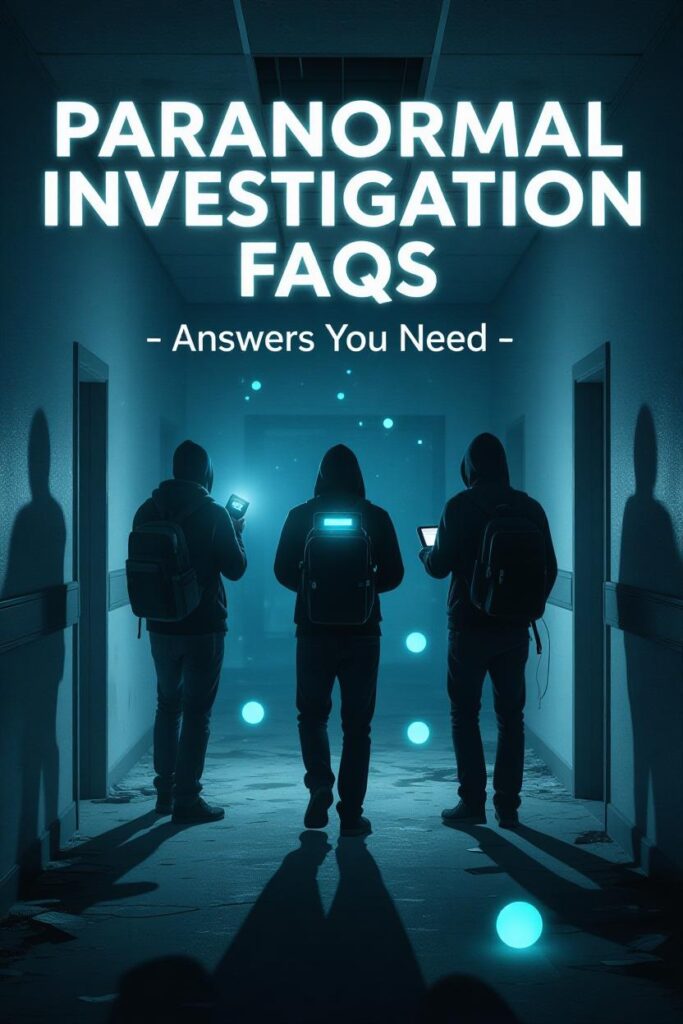
Introduction to Paranormal Investigating
Paranormal investigating has fascinated people for generations. From eerie graveyards to abandoned hospitals, haunted locations carry an energy that feels alive, even when the buildings have been empty for decades.
These places are filled with history, mystery, and whispers of the unknown. For many people, exploring haunted sites is not just about seeking ghosts.
It is about connecting with the stories, tragedies, and emotions that linger in the air.
New ghost hunters often feel both excitement and hesitation. Questions naturally rise: what do you bring with you, how do you stay safe, and how do you know if the evidence is real?
This guide will answer the most common FAQs about paranormal investigating in haunted locations. With detailed explanations, safety advice, and practical tips, you will be better prepared to start your own journey into the paranormal world.
What Is Paranormal Investigating?
Paranormal investigating is the process of exploring locations believed to be haunted in order to gather evidence of supernatural activity.
This can include audio recordings, video footage, photos, and personal experiences. While many people imagine investigators chasing shadows in the dark, the reality is often more methodical.
Successful ghost hunting requires patience, discipline, and respect for the unknown.
Investigators often combine scientific tools with intuition. Some rely heavily on EMF meters and voice recorders, while others focus on personal experiences and psychic sensitivity.
Both approaches have their place. At its core, paranormal investigating is about asking questions and seeking truth in spaces that many avoid.
Why Are Haunted Locations So Fascinating?
Haunted places are filled with atmosphere. A decaying hospital hallway can make your heart race before you even hear a sound.
Cemeteries carry silence and history that feels heavier at night. People are naturally drawn to mystery, and haunted locations provide that in abundance.
Psychologists believe our fascination with haunted places comes from curiosity about death and what lies beyond. These spaces make us question what happens after life ends.
For others, it is about thrill and adrenaline. For paranormal investigators, it is both. Haunted locations hold layers of history, energy, and unanswered questions that drive us to explore further.
Common FAQs About Paranormal Investigating
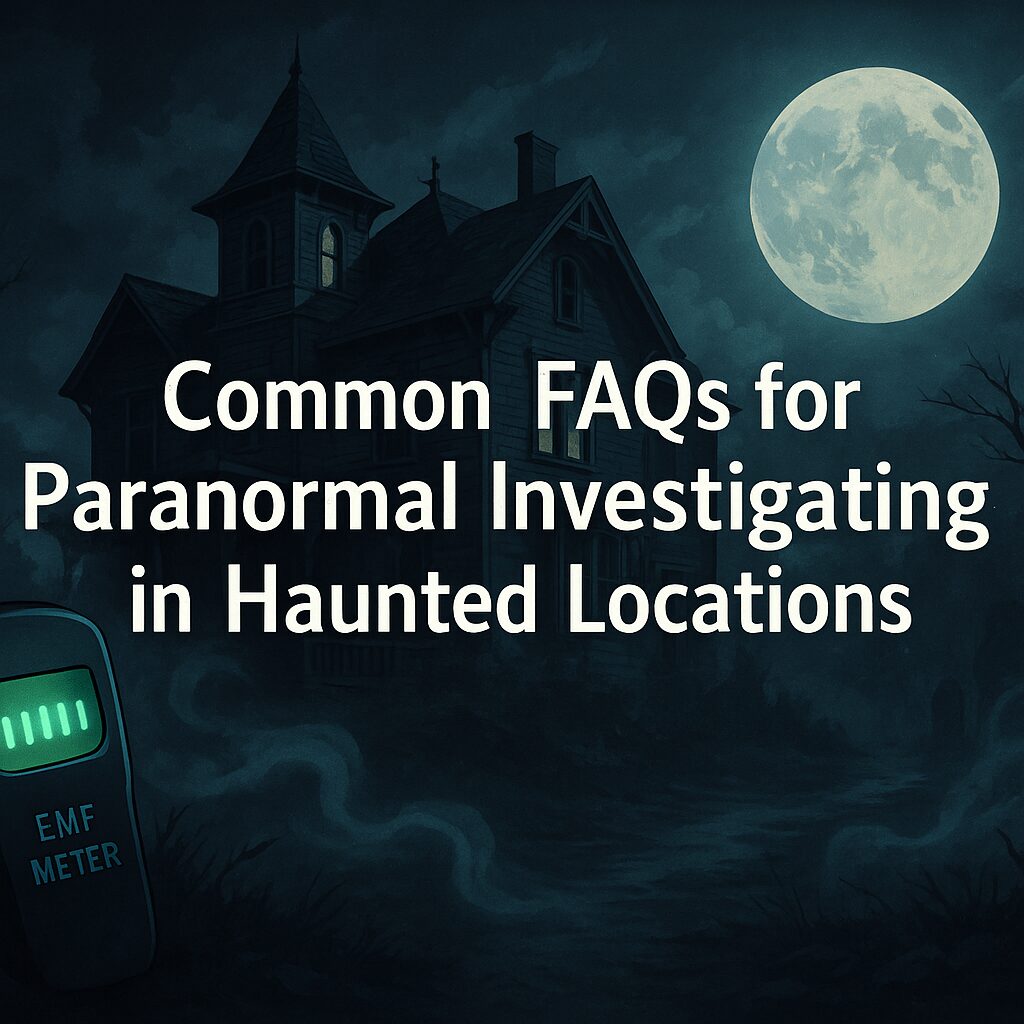
FAQ 1: What Equipment Do You Need for Paranormal Investigations?
Ghost hunting requires tools, but you do not need to spend a fortune to begin. Some basic equipment includes:
- Digital Voice Recorder: Captures EVPs or unexplained voices.
- EMF Meter: Detects electromagnetic changes that may indicate spirit presence.
- Spirit Box: Scans radio frequencies, sometimes producing direct answers to questions.
- Night Vision Camera or Smartphone with IR Add-ons: Useful for documenting activity in the dark.
- Flashlight and Batteries: Safety always comes first.
- Notebook and Pen: Old-fashioned but vital for logging times, experiences, and events.
Beginners can start with just a flashlight and recorder. As your experience grows, you can expand your equipment to fit your style of investigating.
FAQ 2: How Do You Stay Safe During Investigations?
Safety comes before evidence. Haunted places often have broken floors, sharp debris, or unstable structures. Many are not maintained and can be dangerous.
- Always investigate in groups.
- Wear sturdy boots and protective clothing.
- Carry first aid supplies.
- Bring backup lighting and spare batteries.
- Avoid dangerous areas like collapsing staircases or basements with water damage.
Spiritual safety is just as important. Some investigators pray, meditate, or visualize protective light before entering. Staying grounded and respectful is one of the best defenses against negative experiences.
FAQ 3: Can Spirits Really Communicate With Us?
Many investigators believe spirits can communicate in different ways. Some interactions are subtle, like feelings of being watched or cold spots.
Others are more direct, such as disembodied voices, EVPs, or intelligent responses through a spirit box.
Communication is not always clear. Sometimes you receive fragmented words or sounds that require careful review.
The best results often come when investigators ask simple, respectful questions.
For example: “Is anyone here with us?” rather than aggressive or provoking challenges.
FAQ 4: How Do You Know If Evidence Is Real?
Evidence review is one of the most important parts of paranormal investigating. Not every strange sound or movement is proof of a haunting.
- Always rule out natural causes like wind, wildlife, or building noises.
- Look for evidence that appears on multiple devices at the same time.
- Record time stamps to compare later.
- Have multiple people review recordings to reduce bias.
Real evidence is consistent, repeatable, and supported by more than one source. A single shadow may be interesting, but when a shadow appears on camera and someone hears footsteps at the same time, it becomes more credible.
FAQ 5: What Are the Best Haunted Locations for Beginners?
Beginners should start with accessible locations that are safe and open to the public. Some great options include:
- Cemeteries with public visiting hours.
- Historic houses or museums that host ghost tours.
- Hotels with documented hauntings.
- Local landmarks known for supernatural stories.
These locations allow you to practice investigating in controlled environments. Avoid private or dangerous properties until you have more experience and training.
FAQ 6: Do Paranormal Investigations Always Find Evidence?
No. Many investigations result in no unusual activity. Spirits may not always want to communicate, or the environment may not be active at that time.
This does not mean the location is not haunted. Paranormal activity can be unpredictable.
Some nights may be completely quiet, while others may produce clear EVPs or visual evidence. Consistency and patience are key to building strong evidence over time.
FAQ 7: What Are Common Signs of Paranormal Activity?
Paranormal investigators report several common signs, including:
- Sudden cold spots or unexplained temperature changes.
- Footsteps, whispers, or knocks with no visible source.
- Shadows or figures seen out of the corner of the eye.
- Feelings of being watched or touched.
- Objects moving or electronics malfunctioning.
These signs do not always guarantee spirit presence, but when multiple occur at the same time, they may point toward paranormal activity.
FAQ 8: How Should You Prepare Before Visiting a Haunted Location?
Preparation prevents mistakes and accidents.
- Research the history of the location.
- Pack all needed equipment, plus extras like batteries and chargers.
- Dress appropriately for the weather and environment.
- Plan team roles so everyone knows their responsibilities.
- Bring food, water, and first aid supplies for longer investigations.
Good preparation keeps you safe, organized, and ready to handle unexpected situations.
FAQ 9: Can Paranormal Investigating Be Dangerous?
Yes. Both physical and spiritual risks exist.
Physical Risks Include:
- Collapsing floors or ceilings.
- Sharp debris, nails, or glass.
- Exposure to mold or asbestos.
Spiritual Risks Include:
- Emotional exhaustion or sudden mood swings.
- Feeling drained or unusually heavy.
- Attachment of negative energy.
Always respect the location and your own limits. If you feel overwhelmed, it is okay to stop and leave.
FAQ 10: Do Paranormal Investigators Believe in Ghosts?
Not all investigators believe in ghosts. Some are skeptics who search for logical explanations. Others are deeply spiritual and trust in their experiences.
The diversity of perspectives is important. Paranormal investigating combines science, psychology, and personal belief.
Whether you approach it as a skeptic or a believer, keeping an open mind is essential.
FAQ 11: What Should You Do If You Experience Something Scary?
It is normal to feel fear. Haunted locations can be overwhelming, especially for beginners.
- Take deep breaths and stay calm.
- Do not run unless you are in real danger.
- Communicate with your team about what you experienced.
- Step outside if you need space to reset.
Acknowledging your fear is part of learning. Over time, your confidence grows, and you learn how to handle unsettling experiences without panicking.
FAQ 12: Can Anyone Become a Paranormal Investigator?
Yes. Paranormal investigating is open to anyone willing to learn and approach it with respect. You do not need to be psychic or have special powers.
What you do need is patience, curiosity, and discipline. Many teams welcome beginners and provide training. Over time, you develop your own style and methods.
Paranormal investigating is a journey anyone can take, as long as they are prepared and respectful.
FAQ 13: How Long Do Paranormal Investigations Last?
Investigations can last anywhere from a few hours to an entire night. Some teams conduct sessions for multiple nights in the same location.
Short sessions may provide quick results, but longer sessions allow for deeper exploration.
Investigators often take breaks, log notes, and rotate shifts to avoid exhaustion. The key is to remain focused while still giving spirits time to respond.
FAQ 14: What Should You Wear on an Investigation?
Comfort and safety matter more than appearance.
- Sturdy shoes with grip for uneven floors.
- Weather-appropriate clothing.
- Gloves if exploring dangerous environments.
- Extra layers for cold, damp locations.
Dark, non-reflective clothing is often preferred, as it avoids distracting light reflections during video recordings.
FAQ 15: How Do You Document Evidence Properly?
Documentation is critical. Paranormal teams often spend more time reviewing evidence than collecting it.
- Keep a written log of times, events, and feelings.
- Use cameras to capture video of the environment.
- Record EVPs with time stamps.
- Save backup copies of all files.
- Share results with your team for cross-checking.
Proper documentation creates credibility. It allows others to review your findings and reduces personal bias.
Final Thoughts on Paranormal Investigating
Paranormal investigating is more than a hobby. It is a journey into history, human emotions, and the mysteries of life after death.
Every investigation adds experience, even when no evidence is found. Haunted locations invite us to question what we know and to explore possibilities beyond the physical world.
Approaching investigations with patience, preparation, and respect leads to meaningful results.
Spirits may not always communicate, but the experience of being in these spaces is powerful on its own.
Conclusion
This guide has answered the most common FAQs about paranormal investigating in haunted locations.
From equipment and safety to signs of paranormal activity, these detailed insights can help both beginners and experienced ghost hunters.
Haunted places are more than settings for fear. They are windows into the unknown.
With respect and preparation, anyone can begin exploring and documenting the paranormal world.
The journey is filled with mystery, and every investigation brings you closer to understanding what lies beyond.
“In every unanswered question lies the heartbeat of the unknown. Paranormal investigating is not just about finding proof of spirits, but about honoring the silence, the mystery, and the history that lingers in forgotten places. The deeper we search, the closer we come to understanding what waits beyond the veil—and perhaps, even understanding ourselves.”
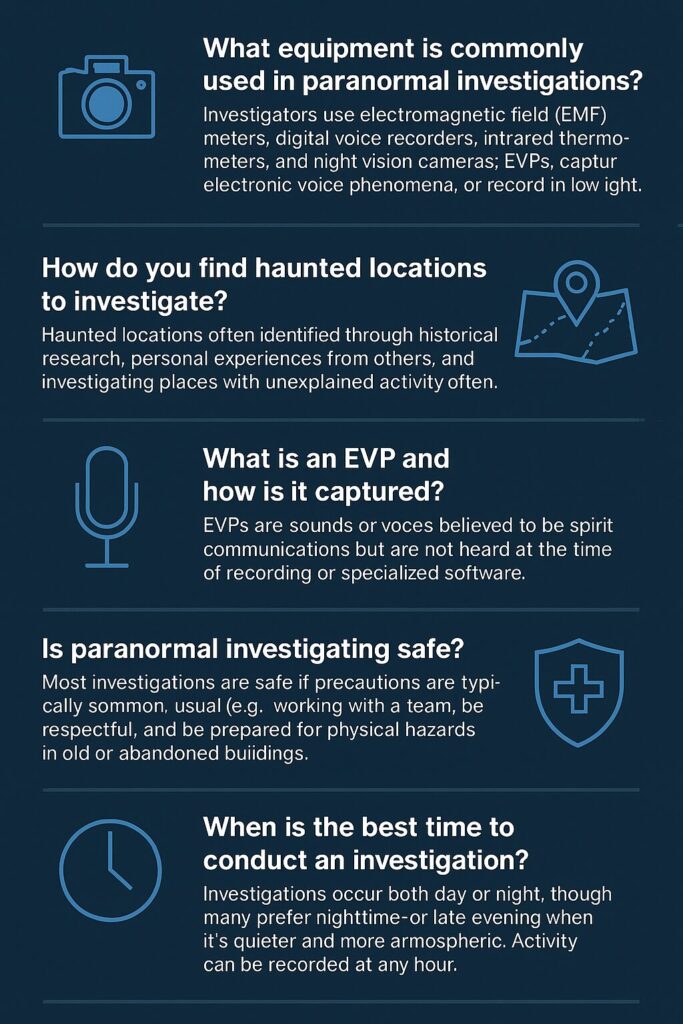
Tips, Strategies, and Techniques for Successful Paranormal Investigating
Paranormal investigating is not only about bringing tools and walking into a haunted building.
The best ghost hunters use proven strategies, careful techniques, and practical tips to make their investigations both safe and productive.
These methods can help you collect stronger evidence, avoid mistakes, and create a smoother investigation process.
Tip 1: Always Do Your Research First
Before setting foot inside a haunted location, learn everything you can about it. Research the history, past owners, tragedies, and known hauntings. Old newspapers, local libraries, and historical societies are excellent resources.
- Knowing the background helps you ask smarter questions during EVP sessions.
- Spirits may respond to names, events, or dates tied to the location.
- History gives context, making your evidence stronger and more credible.
Tip 2: Set Clear Goals for Every Investigation
Do not just wander through a haunted house hoping for something to happen. Create a plan.
- Decide which rooms or areas to focus on.
- Assign each team member a role, such as camera operator, note-taker, or EVP recorder.
- Break the night into sessions to avoid fatigue.
Clear goals prevent wasted time and make your evidence more organized.
Tip 3: Use Both Technology and Intuition
Ghost hunting technology is helpful, but human senses are equally important.
- Trust your instincts when something feels “off.”
- Record both physical evidence (like EMF spikes) and personal experiences (like chills or sudden emotions).
- Compare intuition with tool readings to see if they align.
Sometimes the most powerful paranormal evidence comes from blending science with personal sensitivity.
Tip 4: Keep Communication Respectful
Spirits are believed to be human in nature. Respect is essential.
- Speak clearly and politely during EVP or spirit box sessions.
- Avoid shouting or provoking spirits.
- Use inclusive language, like “Is anyone here who would like to share their story?”
Respectful approaches often create better responses and reduce the chances of negative encounters.
Tip 5: Stay Organized With Evidence
Many investigators collect hours of video, audio, and notes. Without organization, valuable evidence can be lost.
- Use time stamps every time something happens.
- Store files with clear labels, such as “Cemetery EVP Session – 10:30 PM.”
- Share evidence with your team for review to avoid personal bias.
Keeping detailed, organized records adds credibility and makes your findings more professional.
Strategy 1: Layer Your Investigations
Rather than relying on one tool, use multiple techniques at the same time.
- Run an EVP session while monitoring EMF fluctuations.
- Record on video while someone journals personal impressions.
- Cross-compare results to strengthen evidence.
Layered investigating makes it harder to dismiss results as coincidence.
Strategy 2: Investigate at Different Times
Activity does not always happen at night. Spirits may respond during early morning, mid-day, or twilight hours.
- Visit the same location at different times of day.
- Compare results to see if activity is tied to certain hours.
- Keep track of environmental conditions, such as temperature, weather, and moon phases.
Changing times adds depth and variety to your evidence.
Strategy 3: Use Controlled Experiments
Treat paranormal investigating like a scientific experiment.
- Ask the same question in multiple sessions to check for consistency.
- Use controlled triggers, like music or objects tied to the location’s history.
- Place two recorders in different rooms to see if voices appear in both.
Consistency is the key to stronger evidence and more credible results.
Technique 1: The EVP Session
EVPs (electronic voice phenomena) are one of the most popular forms of evidence.
- Sit quietly with a recorder in a focused location.
- Ask clear, simple questions and leave space for answers.
- Replay recordings later with headphones for faint voices.
Pro tip: Avoid whispering, as it can contaminate recordings. Always mark human noises out loud, like “that was my stomach” or “that was a cough.”
Technique 2: Spirit Box Sessions
The spirit box scans radio frequencies quickly, sometimes producing voices or words.
- Ask questions slowly and allow for responses.
- Pay attention to direct, relevant answers rather than random words.
- Record the session for later review, since responses can be missed in real time.
Spirit box sessions can feel chaotic, but strong responses are often clear and meaningful.
Technique 3: Trigger Objects
Trigger objects are items placed in a haunted location to encourage interaction.
- Use toys in child-related hauntings.
- Place coins, jewelry, or photos for historically tied locations.
- Mark the object’s position with tape or chalk to see if it moves.
Trigger objects add a personal, human touch to investigations and sometimes draw strong activity.
Technique 4: Silent Observation
Sometimes the best method is silence.
- Sit quietly in complete darkness with no equipment running.
- Pay attention to sensations, sounds, or changes in the air.
- Document feelings of pressure, heaviness, or sudden energy shifts.
This technique connects investigators to the natural energy of the location and balances technology with human awareness.
Why These Tips and Strategies Matter
Paranormal investigating is not about running into the dark without a plan.
It is about creating structure, staying safe, and building credible evidence.
These tips and techniques will not only make your investigations smoother but will also help you connect more deeply with haunted locations.
Every strategy adds another layer to your investigation, making it richer, more professional, and more respectful.
References
U.S. Ghost Adventures – Science of Hauntings: Ghosts, Spirits, and Hauntings (Beginner’s Guide)
Katie Marie Writer – Ghost Hunting 101: Essential Advice for New Paranormal Investigators
Related YouTube Video
Planning a Paranormal Investigation for Beginners
A clear, beginner-friendly walkthrough for planning a paranormal investigation—from prepping equipment to setting goals and managing group roles.
The Paraghosts Blog
If you want to dive deeper into the world of the supernatural, make sure to visit Paraghosts.com.
It is your number one source for paranormal content online, offering detailed guides, haunted location spotlights, ghost hunting equipment reviews, and real investigation insights.
Whether you are just beginning your paranormal journey or you have years of experience exploring haunted places, Paraghosts.com gives you the knowledge, tools, and stories you need to take your investigations to the next level.
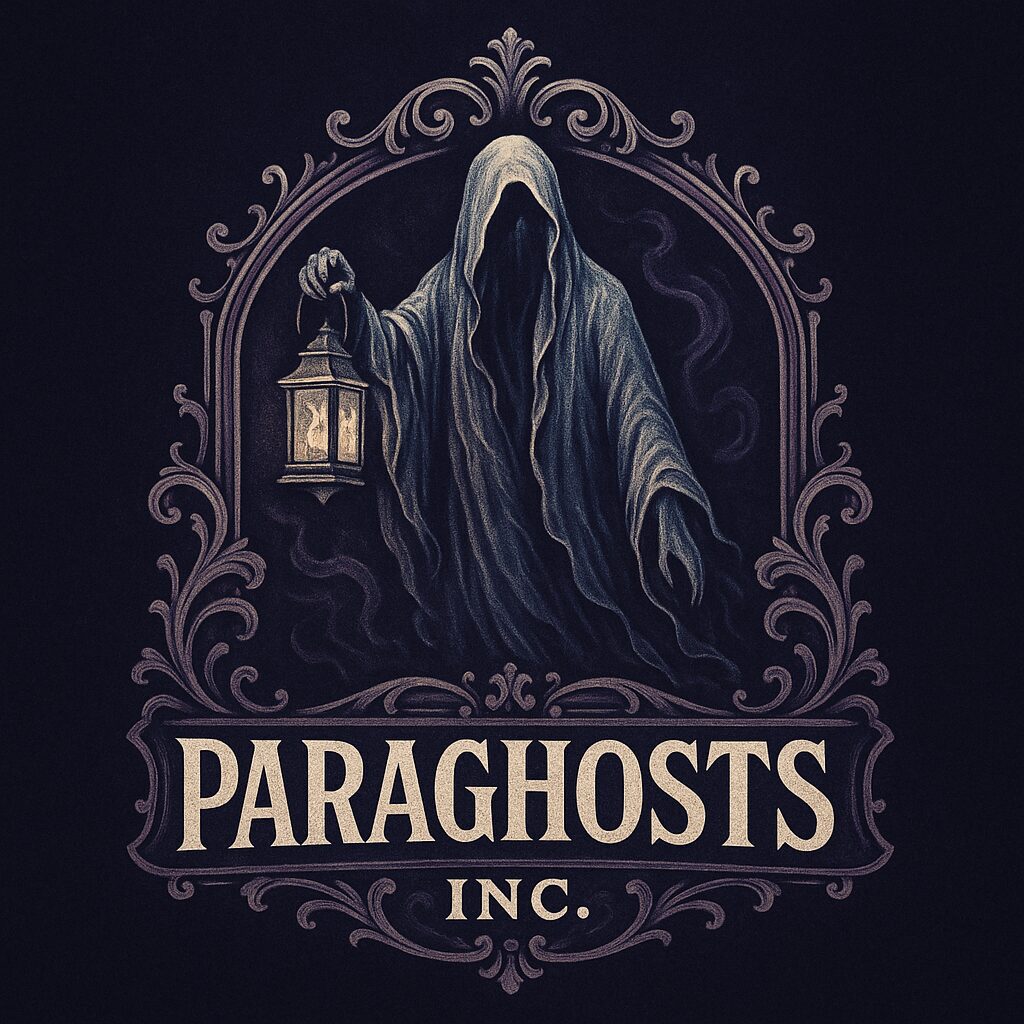
- Paranormal Investigators Guide: Debunking vs Proving Hauntings - November 22, 2025
- True paranormal stories from abandoned hospitals - November 22, 2025
- What Is the Butterfly Effect in Simple Terms for Beginners? - November 9, 2025
